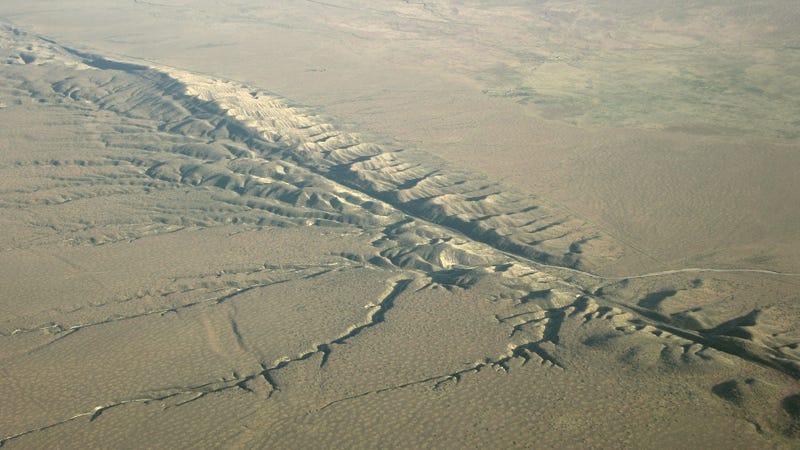Oct. 4, 2016 - Update No. 2 - View of Matthew from the International Space Station
Cameras outside the International Space Station captured dramatic views of major Hurricane Matthew Oct. 3 as the orbital complex flew 250 miles over the storm at 4:15 p.m. EDT. Packing winds of 140 miles an hour as a Category 4 hurricane, Matthew was expected to pass over western Haiti and eastern Cuba Oct. 4 before charging north over the Bahamas Oct. 5 and potentially threatening the east coast of the United States later in the week.
Oct. 4, 2016 - Update No. 1 - NASA Sees Hurricane Matthew Making Landfall in Haiti
Hurricane Matthew made landfall in western Haiti during the morning hours of Oct. 4, and a NASA animation of NOAA's GOES-East satellite covered the monster storm.
This animation of NOAA's GOES-East satellite imagery from Oct. 2 to Oct. 4, 2016, shows Hurricane Matthew moving through the Caribbean Sea and making landfall on Oct. 4 over western Haiti.
NOAA's GOES-East satellite provides continuous imagery of the Atlantic Ocean and eastern U.S. and has been keeping a close eye on powerful Hurricane Matthew. Infrared imagery shows Matthew's movements at night, while visible imagery shows Matthew's movements during the day. At NASA's Goddard Space Flight Center in Greenbelt, Maryland, both infrared and visible imagery were combined into an animation from Oct. 2 to Oct. 4. The animation ends just after Hurricane Matthew made landfall on Oct. 4 near Les Anglais in western Haiti about 7 a.m. EDT (1100 UTC).
This infrared image of Matthew was taken from the MODIS instrument aboard NASA's Aqua satellite on Oct. 4, 2016, at 2:10 a.m. EDT (0610 UTC). Red indicates very cold cloud tops with the potential to generate very heavy rainfall.
Credits: NASA/NRL
A hurricane warning is in effect for Haiti; the Cuban provinces of Guantanamo, Santiago de Cuba, Holguin, Granma and Las Tunas; the southeastern Bahamas, including the Inaguas, Mayaguana, Acklins, Crooked Island, Long Cay and Ragged Island; the Central Bahamas, including Long Island, Exuma, Rum Cay, San Salvador and Cat Island; and the northwestern Bahamas, including the Abacos, Andros Island, Berry Islands, Bimini, Eleuthera, Grand Bahama Island and New Providence.
A tropical storm warning is in effect for the Dominican Republic from Barahona westward to the border with Haiti, Jamaica, and the Turks and Caicos Islands.
There are also hurricane and tropical storm watches in effect today, Oct. 4. A hurricane watch is in effect for the Cuban province of Camaguey. A tropical storm watch is in effect for the Dominican Republic from Puerto Plata westward to the border with Haiti.
On Oct. 4 at 2:10 a.m. EDT (0610 UTC), NASA's Aqua satellite passed over Matthew and analyzed the hurricane in infrared light to show temperatures. The MODIS, or Moderate Resolution Imaging Spectroradiometer, instrument aboard NASA's Aqua satellite revealed cloud top temperatures as cold or colder than minus 70 F (minus 56.6 C). NASA research indicates very cold cloud tops with the potential to generate very heavy rainfall.
At 8 a.m. EDT (1200 UTC) on Oct. 4 the eye of Hurricane Matthew was located inland Haiti near 18.4 degrees north latitude and 74.2 degrees west longitude. That's just 10 miles (15 km) east of Tiburon, Haiti, and about 125 miles (200 km) south of the eastern tip of Cuba.
NOAA's National Hurricane Center (NHC) said Matthew was moving to the north near 9 mph (15 kph), and this general motion is expected to continue today. A turn toward the north-northwest is expected by Wednesday, Oct. 5, followed by a northwest turn Wednesday night. On the forecast track, the eye of Matthew will move near or over portions of the southeastern and central Bahamas tonight and Wednesday, and approach the northwestern Bahamas Wednesday night.
Maximum sustained winds remain near 145 mph (230 kph) with higher gusts. Matthew is a category 4 hurricane on the Saffir-Simpson Hurricane Wind Scale. Some fluctuations in intensity are possible during the next couple of days, but Matthew is expected to remain a powerful hurricane through at least Wednesday night.
Hurricane-force winds extend outward up to 40 miles (65 km) from the center and tropical-storm-force winds extend outward up to 185 miles (295 km). The estimated minimum central pressure is 934 millibars.







